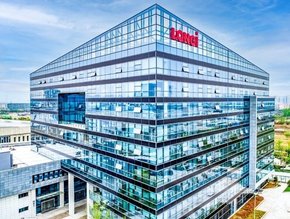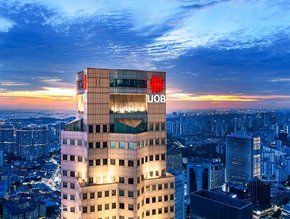AI: the key to producing an enriched & engaging environment

The artificial intelligence (AI) Landscape in the Asia Pacific (APAC) region
With an expected total value of US$156.bn as 2020 comes to a close, artificial intelligence (AI) technology is predicted - by 72% of executives - to be the most significant business advantage as we look to the future. Despite the economic impact of COVID-19, the International Data Corporation (IDC) expects investments in AI to recover, projecting that the worldwide revenue will surpass US$300bn by 2024.
While Gartner predicts that global AI will be incorporated into 47% of organisations’ HR functions by 2022, research conducted by Protiviti indicates that specifically the APAC region is adopting the technology at a faster rate than others around the world. Protiviti’s report found that, compared to Europe (7%) and North America (11%), 22% of organisations in APAC are at advanced stages of deployment.
This indication is also apparent in a study conducted by Oracle and Future Workplace, which identified that 80% of APAC countries highlighted that over 50% of their workers are currently using some form of AI in their working environment, Specifically, 77% of workers in China and 78% in India have adopted AI, while the numbers in France and the United Kingdom are significantly lower at just 32% and 38% respectively.
The benefits and challenges of artificial intelligence (AI) in HR
Benefits
- Increased accuracy when it comes to hiring, for long-term operational success. “Organisations can use predictive algorithms to estimate a potential candidate’s fit for a position, and funnel the selection process to allow for the best fitment in a given situation,” says Aditya Arora, CEO of Teleperformance India.
- Reduced bias in the hiring process.
“AI can be programmed to ignore demographic information about candidates that typically leads to biased human decision-making,” says Aditya Arora, CEO of Teleperformance India.
Challenges
- The misconception that implementing AI eliminates human intelligence from HR.
“This is far from the case. Investment in AI provides human agents the ability to handle tasks demanding attention, enhancing the entire cycle of the employee experience. AI-powered chatbots, in particular, make HR processes simpler, faster and safer, facilitating fluid two-way dialogues between remote employees and senior leaders – with more personalised experiences,” says Aditya Arora, CEO of Teleperformance India. - The ability to keep up with the pace of technological changes in the workplace. Oracle reports that 76% of workers and 81% of HR leaders find this challenging.
When it comes to humans and AI in APAC HR operations, 76% of talent acquisition professionals are already using AI, reporting its capabilities of generating high quality candidates and reducing bias in the recruiting process. Oracle and Future Workplace’s study found that, specifically in the APAC region, 53% of people think robots can provide unbiased information and feedback that is better than managers.
The future of humans and AI collaboration in HR
“AI will be the key to optimising manpower and gaining critical efficiencies in the coming months, so that time can be better spent on value-added, strategic, and creative tasks,” comments Aditya Arora, CEO of Teleperformance India. By combining the technology with human capabilities, the automation of back-office HR processes is cutting down the time spent on manual, low-value tasks, allowing organisations to benefit from more effective operations, with human time spent on more value-adding tasks.
Reflecting on the industry long term, it is expected that the use of AI for talent acquisition will continue to rise as digital hiring models become more advanced. “Automated hiring software can eliminate the need for manual background checks and seamlessly identify appropriate candidates from untapped talent pools,” says Arora. “As digital hiring models become more advanced, recruiters will spend less time screening applicants, freeing their bandwidth to create personalised employee experiences.” In addition to automated hiring software, automated recruitment chatbots are also experiencing an increase in adoption due to the technology's capability to better engage with candidates at the first stage of interest in a role. “Capable of popping up on social media networks, the bots are designed to ask interested candidates a series of frequently asked questions, such as, ‘what is your previous work experience?’ or ‘what qualifications do you have?’ The responses are then synced into an application tracking system, so no friction is added to the user’s online experience,” adds Arora.
Another use case on the rise is the adoption of gamification as an alternative to classroom learning programs. Arora has seen the use of this technology in the HR environment “proving its worth across the employee lifecycle. New starters can benefit from an improved learning experience, with a focus on self-learning modules and gamified versions of training sessions.”
Ultimately the use of AI in HR is expected to be a collaborative tool that can produce a more enriched and engaging work environment as well as a greater capacity for wider business operations.
COVID-19’s impact on the collaboration of humans and AI
Whether it be positively or negatively, organisations and their operations around the world have faced significant impact from COVID-19, which has ultimately led to a shift in the way that organisations work. “The way we work, and subsequently the way we manage dispersed workforces, has been changed forever by COVID-19. HR leaders have had to grapple with the challenges of keeping the remote workforce productive and satisfied, while keeping service delivery high and costs low,” reflects Arora.
In the ‘new normal’ that organisations are faced with, employees are embracing engaging remote working environments, supported by cloud-based platforms. “In these unprecedented times, the cloud has become an organisation’s primary - if not exclusive - means of keeping employees motivated, supported, and productive – anytime, anywhere,” adds Arora.
In addition to cloud based platforms, COVID-19 has accelerated the implementation of AI powered performance management tools. These tools provide technology-enabled learning and development opportunities, which can be assessed, measured, tracked and provide feedback via AI that is accurate, consistent and of high quality.
“As a result, we can expect to see an ongoing trend towards the adoption of holistic cloud-based platforms and automated technologies in the back-office. As organisations race to contingency plan and prepare for unknown circumstances, organisations will ramp up their uptake of these virtual technologies to maintain consistent and seamless delivery.”
The importance of having the right mindset and culture when it comes to human and AI collaboration in HR
“With wider business disruption taking place across industries, the need for a continuous learning culture has never been more important for growth. Alongside AI’s potential for improving learning and development, HR leaders need to drive positive cultural change with the necessary leadership support. An organisation’s focus should be on responding to employees’ changing needs. HR managers should always ensure AI adoption is modified to make the organisation more agile, and to suit the organisation’s culture, rather than disrupt it.”
- Aditya Arora, CEO of Teleperformance India
For more information on business topics in Asia Pacific, Australia and New Zealand, please take a look at the latest edition of Business Chief APAC.






